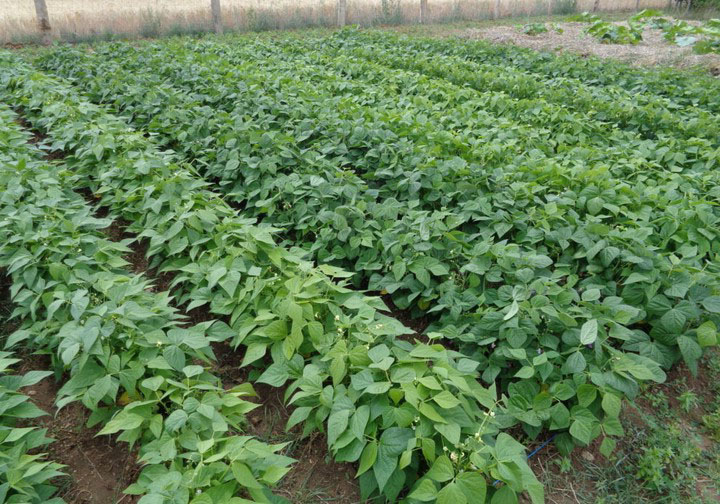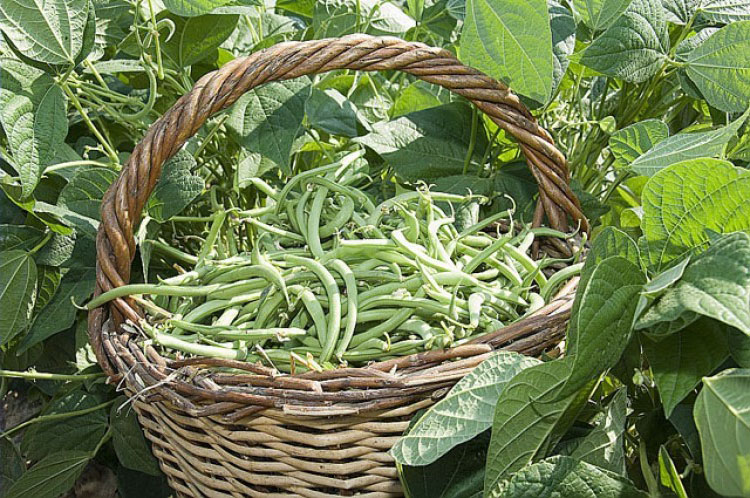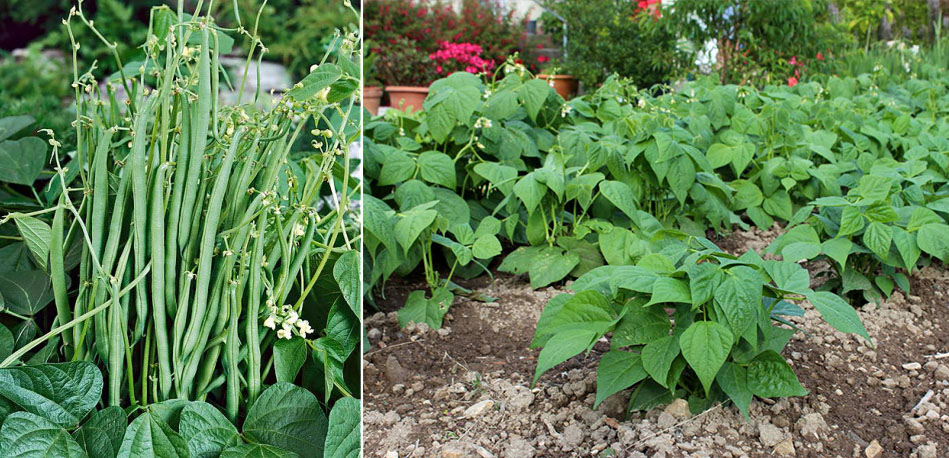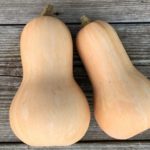When to sow dwarf beans?
Dwarf beans are sown as soon as the average temperatures exceed 10 ° C. Indeed, this annual fast culture fears the cold. It is therefore best to wait until spring settles before sowing. Of May to July-August and even September, when the climate is mild, is the right time to start. In this way you can stagger your crops from summer to autumn.
This plant blooms at the end of spring then presenting pretty white papilionaceous flowers which then turn in summer green pods for mangetout beans, yellow for butter beans or even violets, it is also this diversity that makes the success of this vegetable. Rich in minerals, vitamins and trace elements, and very low caloric, beans are vegetables full of assets. They cook very easily with steam or water and accompany both your salads and your hot dishes with just a touch of fresh butter.
Which varieties to choose?
In the large family of baby beans, there are two main categories:
- Parchment beansThey can be harvested young or mature according to your tastes. Picked young, the advantage is that they are wireless beans. At full maturity, they are an asset if you eat the seeds.
- Beans without parchmentThey are picked once they are well fleshed and before the formation of seeds. We find in this category, green beans mangetout beans and butter beans, yellow and without son, it is certainly for this reason that they are very appreciated.
In the family of wireless mangetout beans, we find several varieties. In general, they are beans big enough, whose wall remains fine and pleasant in the mouth. There are two varieties in particular:
- The contender: it is a hasty rustic, very productive. It comes in the form of long wireless pods. It sows between April and August and you harvest it from July to October. It's perfect for canning, tasting fresh or freezing.
- The castandel: is in a way an improved variety of the cotender. Its pods are a little shorter, it is very productive and more rustic. It is very resistant to drought and disease and is very easily preserved.
- The green kidney beanIt is ideal for freezing and preserving. Its seeds come from organic farming.
- The amethyst It is very early and gives very beautiful purple pods with excellent taste properties. It is particularly productive and its harvest is spread. It is perfectly preserved and easily resistant to diseases, it comes from Purple Queen.
- The Rocquencourt butter It is also very early. Its long and fine pods are golden yellow and very tasty. It offers a very generous harvest.
Dwarf beans with fillets are mangetout beans that are harvested as fillets, which means they are young and harvested every two or three days. They are very tender and they are also very tasty. We find in this category, different varieties:
- The end of BagnolsIt is sown between April and August and harvested between June and October. It offers a good production grouped and abundant, it resists disease and is very tasty. It is perfect at the beginning and at the end of the season.
- The triumph of Farcy: it is a fine bean which is sown between April and August for a harvest until October. It takes a long time to pick up the wire and is not very sensitive to the cold. He is very good.
- The Morgane : it is resistant to bean diseases, its production is slow to take the lead. Its pods are very fine and have a delicate flavor.
- The stingIt also resists diseases, its pods are full of flavor and its production is grouped and important.
The dwarf beans, from the extra-fine family, are generally the ones that are acclaimed by children, they are wireless for the most part. There are different varieties:
- The braimar: its particularity is that its long pods grow above the leaves. It is resistant to anthracnose and is productive. It is easy to preserve. It is a precocious one.
- The calypso We like its rising and spreading production and its perfect resistance to both drought and disease. It is particularly tasty.
- The organdyIt is very pleasing to children and adults with a delicate palate. It sows between April and August and is harvested from June to October. The AB organdi is the one whose seeds are from organic farming.
- Cupid it is very productive and its production is grouped. Its pods are thin and long.
- The Talisman : its pods wireless are very appreciated, it is precocious and its harvest is generous, between June and October. It is resistant to different diseases that can affect the bean. The Talisman AB is the one whose seeds come from organic farming.
- The DelinelIt is semi-early and has excellent taste qualities. It keeps very well and its production is abundant. It is easily resistant to diseases.
- The Crockett It is an early dwarf and a fairly recent variety with few leaves. The pods are very thin and dark green, the production is staggered and abundant. It offers a pleasant flavor and resists diseases.
Butter beans butter The main variety is Carson, which has a yellow pod, which is sown between April and August and harvested between June and October.
What to do before sowing the kidney beans?
To best prepare your soil before planting your beans, you will take care to pass the rake or the hook. You do not need to amend the soil, this is unnecessary in the case of beans. If you had done it for previous crops, make sure the soil is not too wet before sowing.
Draw the furrows keeping at least 50 cm between each row to facilitate harvesting and avoid certain diseases.
How to sow them?

Dwarf beans are best sown when the soil has had time to warm up. It is necessary that the moisture content is perfectly balanced, indeed on a soil too dry, they do not germinate and on a soil too wet, the seeds rot. It is therefore necessary to carefully dose the watering before sowing.
Then you sow them in spaced lines, put a seed every 5 to 10 cm on the line. You can also sow in pans of 5 to 6 grains distant of 40 cm. It is then necessary to slightly cover the seeds with soil.
A few days after lifting, go for the first time and then wait three weeks before starting again, butting them a little.
As long as they have not sprouted, make sure that the seeds are always covered with a thin layer of soil.
Where to plant dwarf beans?
Plant your kidney beans in a sunny part of your garden. The soil must be moist, but not waterlogged. If you can, enrich the soil at this compost site before winter.
How to maintain them?
As soon as the kidney beans reach 15-20 cm in height, it is recommended to hoe and butter the soil until the first two leaves. Once you've hit them, water them sparingly.
Every 30 cm, you can put stakes (oars) bamboo, chestnut, hazel … You tilt inward the plot and you bind them to the top.
You do not need to add fertilizer to your growing beans. Indeed, its nitrogen content and its roots are enough to enrich the field. At the end of the season, put the garbage in the compost, and especially avoid replanting your dwarf beans in the same place the following year.
You do not need to cut dwarf beans, on the contrary, the foliage while pushing helps protect the pods from the sun. This is why you can harvest over a long period of time. Biner helps eliminate weeds that could grow around the foot.
How to water the kidney beans?
To water the beans, do not wet the foliage, especially in the case of string beans which avoids the son.
The frequency of watering : it is better to water once a week when the soil is mulched, otherwise you can go to 2 or more times a week between the beginning of flowering and the time of harvest.
Water quality it must not be too calcareous.
Signs of dehydration : in case of dehydration, you find it with the wilting leaves, the beans with nets then have more threads.
How to water : sprinkling: it takes a lot of water for the water to reach the ground.
mulching If the climate is changeable enough, it is best to mulch your kidney beans. It is thus easier to maintain a constant and effective humidity during the hottest and driest periods.
Harvesting Dwarf Beans: When and How?

The beans are picked on average two months after sowing. Fillets may be harvested a little later, while older varieties will be harvested before they reach full maturity. To avoid the threads, break a bean in half and check that it is not yet. You will pick up your beans every three or four days.
Net beans should be harvested every two days to avoid yarns.
When picking your beans, be careful not to shoot, but be sure to cut the peduncle cleanly. This will prevent you from breaking bouquets that carry the flowers and are therefore productive for another two to three weeks depending on the variety.
To know : keep a few feet of beans that you keep in their state until the foliage is perfectly dry. You then harvest the pods and you seed them. Then you just have to keep the seeds in a dry and airy place to sow them again next spring.
Diseases of the kidney beans and what to do?
The bean may be more or less susceptible to diseases and parasitic attacks. You have to react quickly and monitor them constantly.
Diseases of the kidney bean :
- FatGrease can be recognized by the oily, yellow stains that appear on the foliage. It usually appears after a wet period, then hot. Preventive treatment with Bordeaux mixture is very effective.
- anthracnose : it identifies easily with brown or black spots that form on the leaves. Persistent varieties are much less prone to this disease. If your plants are infected, spray them with Bordeaux mixture or horsetail before the pods form.
- Rust it is manifested by the appearance of pustules on the inner side of the leaves. Brown spots may also form on the pods. To avoid rust, space the bean rows for better ventilation, which limits fungus attacks. Affected plants will be removed, but do not put them in compost. The decoction of horsetail is quite effective in preventive treatment especially at the end of the season, when the bean is more vulnerable. You can, in the event of a really important attack, use a fungicide marked "authorized use in the garden".
Parasites of the kidney bean :
- The seedling fly;
- Tetranic: it is a mite;
- The bean weevil: the larvae grow in the beans. The cold being able to kill them, it is necessary to put the beans 5 days in the freezer after shelling.
- The root aphid;
- Slug and snail;
- The black bean aphid: in this case you will be forced to tear off the feet invaded by black aphids. To avoid them, plant nasturtiums next to them.
To avoid most of these pests, you can plant basil close by, this is a technique that works very well.
For the slugs and fliesPut ferramol on the soil around the seedlings. Do not hesitate to put nettle manure to strengthen the young plants.
For acariansthe best is to bring in cultivation aids, consumers of mites. It is also necessary to reduce a little watering and straw and if really the earth is too dry, proceed by misting.
To move away the aphids, install tagetes close to the feet.
Even more plantations:








